Full text
PDF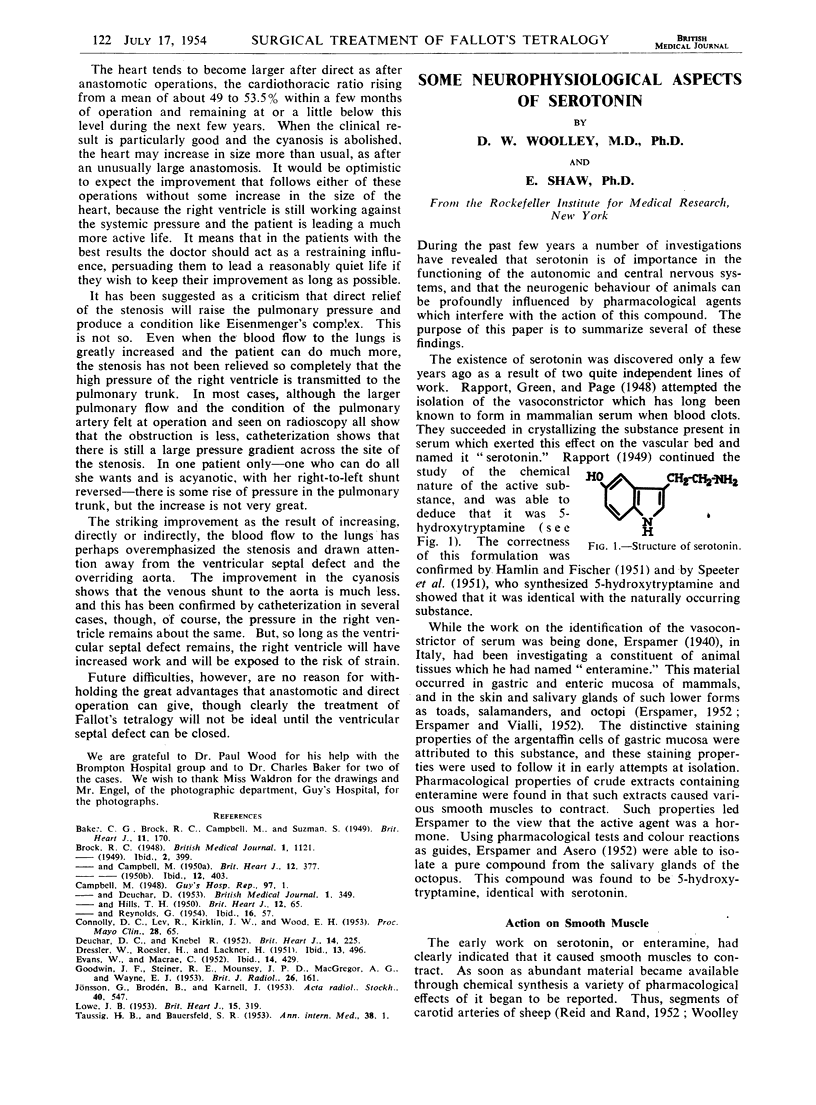
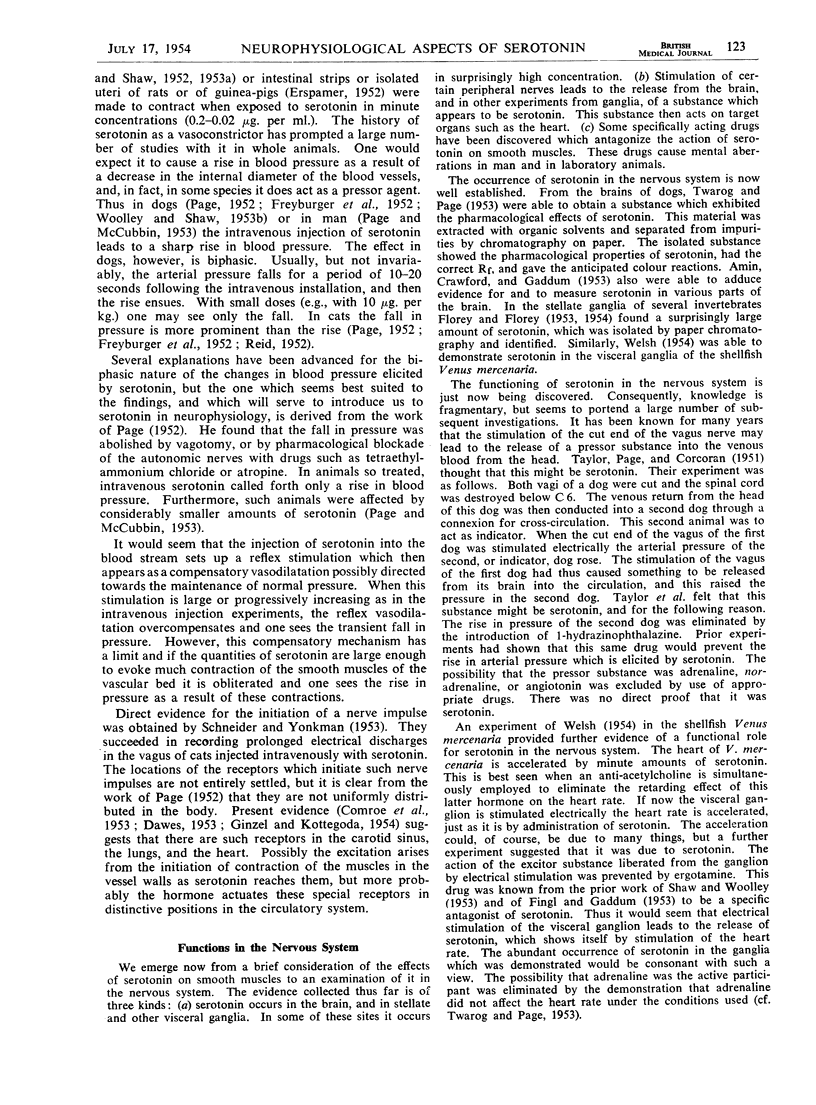
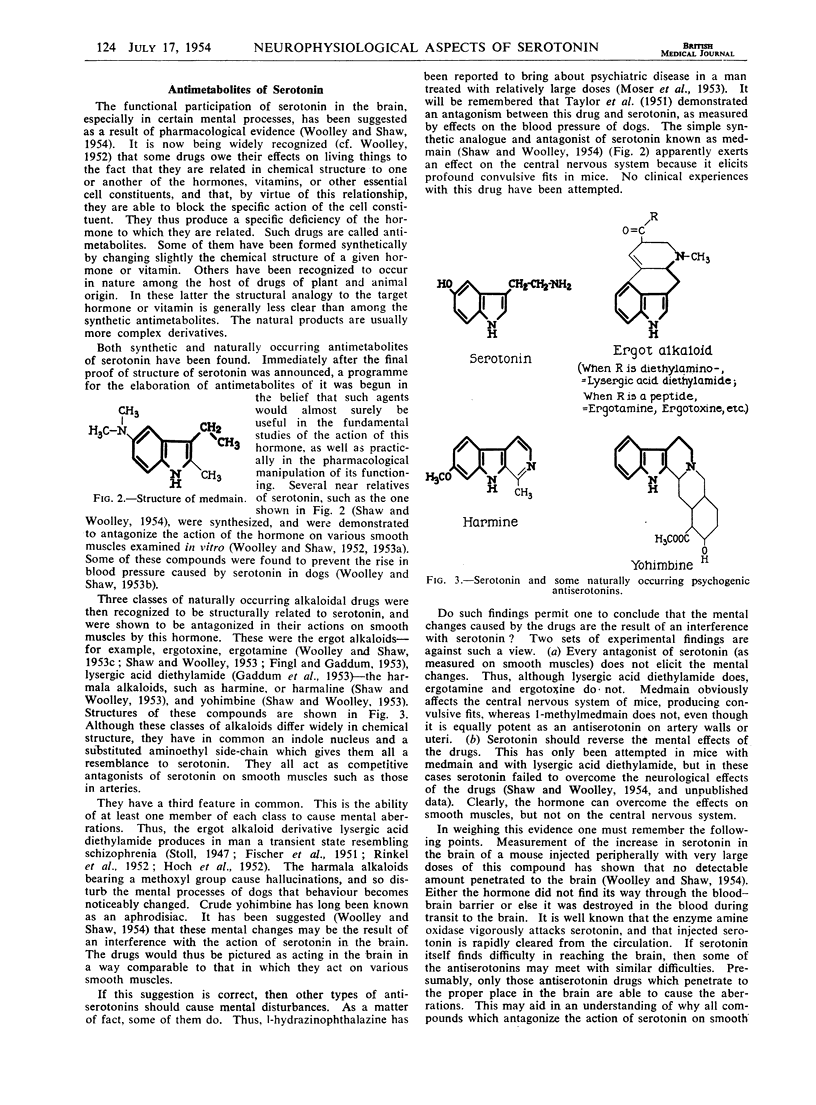
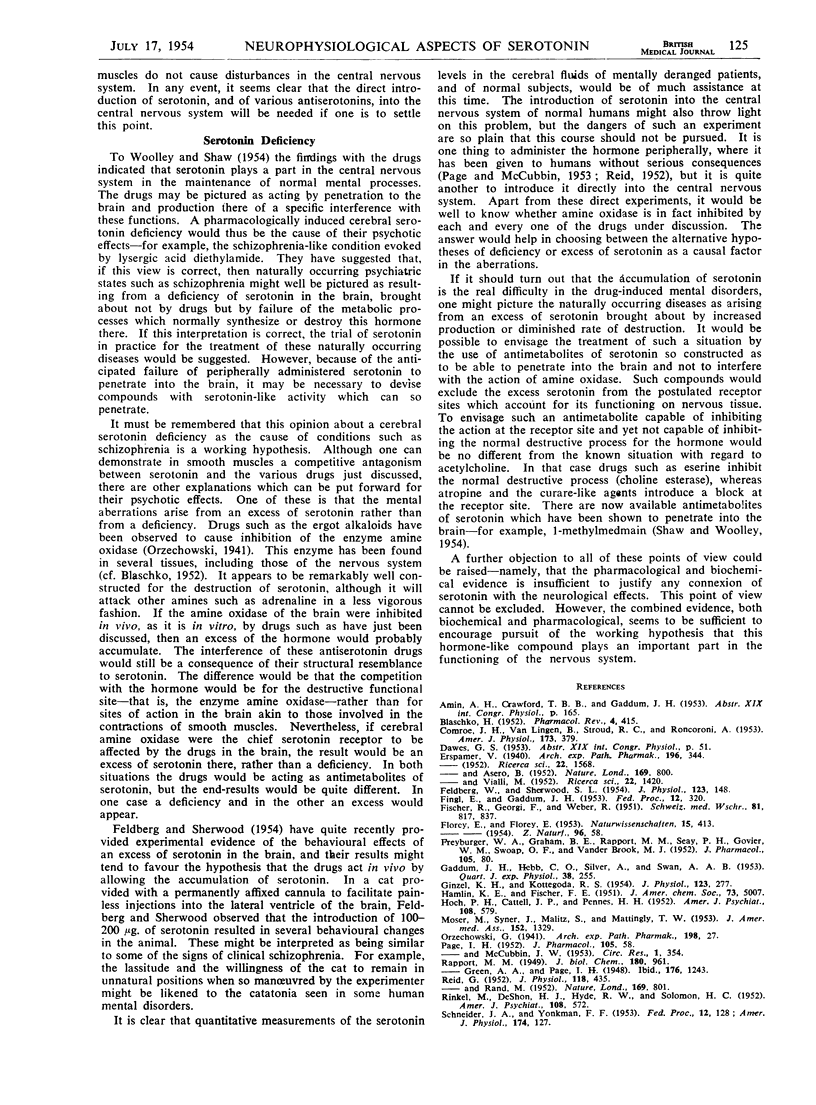
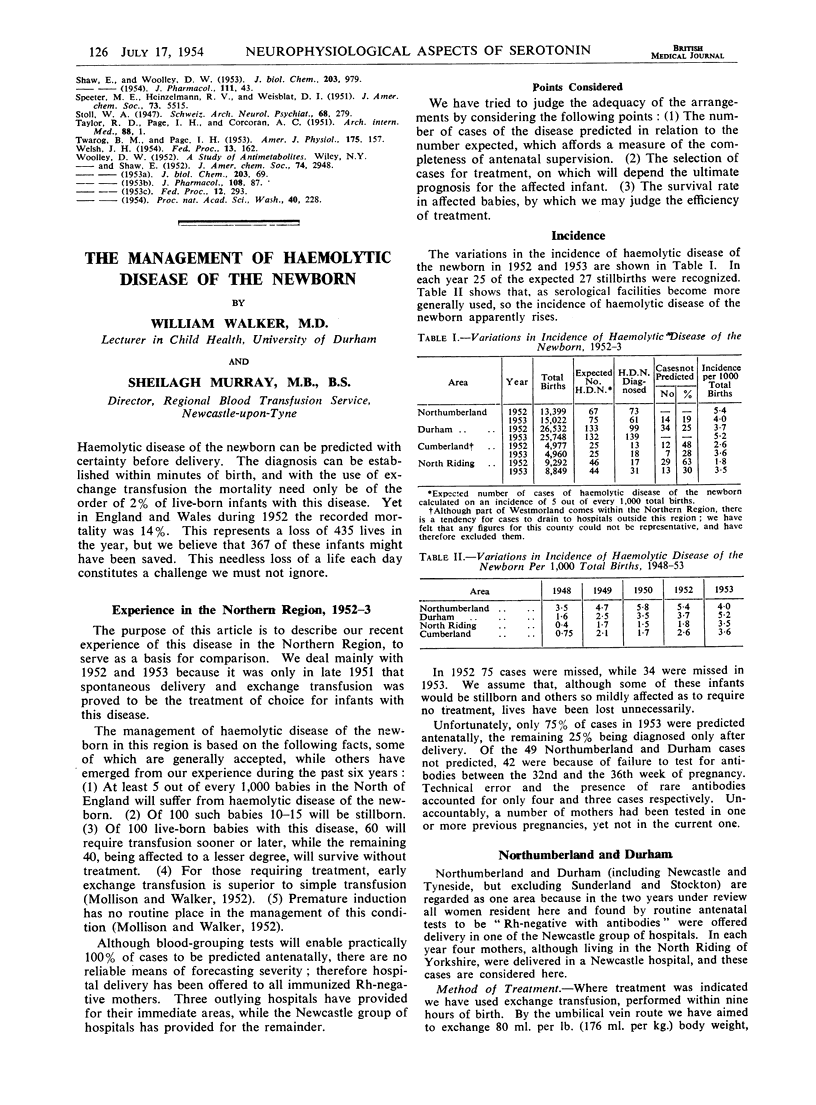
Selected References
These references are in PubMed. This may not be the complete list of references from this article.
- BLASCHKO H. Amine oxidase and amine metabolism. Pharmacol Rev. 1952 Dec;4(4):415–458. [PubMed] [Google Scholar]
- COMROE J. H., Jr, VAN LINGEN B., STROUD R. C., RONCORONI A. Reflex and direct cardiopulmonary effects of 5-OH-tryptamine (serotonin); their possible role in pulmonary embolism and coronary thrombosis. Am J Physiol. 1953 Jun;173(3):379–386. doi: 10.1152/ajplegacy.1953.173.3.379. [DOI] [PubMed] [Google Scholar]
- ERSPAMER V., ASERO B. Identification of enteramine, the specific hormone of the enterochromaffin cell system, as 5-hydroxytryptamine. Nature. 1952 May 10;169(4306):800–801. doi: 10.1038/169800b0. [DOI] [PubMed] [Google Scholar]
- FELDBERG W., SHERWOOD S. L. Injections of drugs into the lateral ventricle of the cat. J Physiol. 1954 Jan;123(1):148–167. doi: 10.1113/jphysiol.1954.sp005040. [DOI] [PMC free article] [PubMed] [Google Scholar]
- GADDUM J. H., HEBB C. O., SILVER A., SWAN A. A. 5-Hydroxytryptamine; pharmacological action and destruction in perfused lungs. Q J Exp Physiol Cogn Med Sci. 1953;38(4):255–262. doi: 10.1113/expphysiol.1953.sp001037. [DOI] [PubMed] [Google Scholar]
- GINZEL K. H., KOTTEGODA S. R. The action of 5-hydroxytryptamine and tryptamine on aortic and carotid sinus receptors in the cat. J Physiol. 1954 Feb 26;123(2):277–288. doi: 10.1113/jphysiol.1954.sp005050. [DOI] [PMC free article] [PubMed] [Google Scholar]
- HOCH P. H., CATTELL J. P., PENNES H. H. Effects of mescaline and lysergic acid (d-LSD-25). Am J Psychiatry. 1952 Feb;108(8):579–584. doi: 10.1176/ajp.108.8.579. [DOI] [PubMed] [Google Scholar]
- MOSER M., SYNER J., MALITZ S., MATTINGLY T. W. Acute psychosis as a complication of hydralazine therapy in essential hypertension. J Am Med Assoc. 1953 Aug 1;152(14):1329–1331. doi: 10.1001/jama.1953.63690140001008. [DOI] [PubMed] [Google Scholar]
- PAGE I. H., MCCUBBIN J. W. The variable arterial pressure response to serotonin in laboratory animals and man. Circ Res. 1953 Jul;1(4):354–362. doi: 10.1161/01.res.1.4.354. [DOI] [PubMed] [Google Scholar]
- PAGE I. H. The vascular action of natural serotonin, 5- and 7-hydroxytryptamine and tryptamine. J Pharmacol Exp Ther. 1952 May;105(1):58–73. [PubMed] [Google Scholar]
- REID G. Circulatory effects of 5-hydroxytryptamine. J Physiol. 1952 Dec;118(4):435–453. doi: 10.1113/jphysiol.1952.sp004806. [DOI] [PMC free article] [PubMed] [Google Scholar]
- REID G., RAND M. Pharmacological actions of synthetic 5-hydroxytryptamine (serotonin, thrombocytin). Nature. 1952 May 10;169(4306):801–802. doi: 10.1038/169801a0. [DOI] [PubMed] [Google Scholar]
- RINKEL M., DeSHON H. J., HYDE R. W., SOLOMON H. C. Experimental schizophrenia-like symptoms. Am J Psychiatry. 1952 Feb;108(8):572–578. doi: 10.1176/ajp.108.8.572. [DOI] [PubMed] [Google Scholar]
- SCHNEIDER J. A., YONKMAN F. F. Action of serotonin (5-hydroxytryptamine) on vagal afferent impulses in the cat. Am J Physiol. 1953 Jul;174(1):127–134. doi: 10.1152/ajplegacy.1953.174.1.127. [DOI] [PubMed] [Google Scholar]
- SHAW E., WOOLLEY D. W. Yohimbine and ergot alkaloids as naturally occurring antimetabolites of serotonin. J Biol Chem. 1953 Aug;203(2):979–989. [PubMed] [Google Scholar]
- TAYLOR R. D., PAGE I. H., CORCORAN A. C. A hormonal neurogenic vasopressor mechanism. AMA Arch Intern Med. 1951 Jul;88(1):1–8. doi: 10.1001/archinte.1951.03810070011001. [DOI] [PubMed] [Google Scholar]
- TWAROG B. M., PAGE I. H. Serotonin content of some mammalian tissues and urine and a method for its determination. Am J Physiol. 1953 Oct;175(1):157–161. doi: 10.1152/ajplegacy.1953.175.1.157. [DOI] [PubMed] [Google Scholar]


